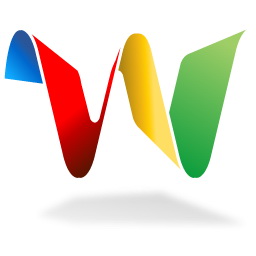Google Wave is a real-time communication and collaboration platform that incorporates several types of web technologies, including email, instant messaging (IM), wiki, online documents, and gadgets.
From the perspective of a software developer, Wave is a technological marvel that pushes the boundaries of concurrent messaging and modern Web standards. Despite its prodigious sophistication under the hood, the service never resonated with its target audience. Regular end users saw it as a mismatched amalgamation of disparate messaging paradigms blended together in a cumbersome Web-based interface.
Google announced that it will discontinue development of Wave, its experimental, Web-based messaging platform. The company cites lack of adoption as the key reason for shelving the ambitious project.
“Last year at Google I/O, when we launched our developer preview of Wave – a web app for real time communication and collaboration – it set a high bar for what was possible in a web browser,” explained Senior VP of Google Operations Urs Hölzle.
“We showed character-by-character live typing, and the ability to drag-and-drop files from the desktop, even ‘playback’ the history of changes — all within a browser. But despite these wins, and numerous loyal fans, Wave has not seen the user adoption we would have liked.”
However, Hölzle emphasized that the platform would be cannibalized for other, ongoing projects.
“The central parts of the code, as well as the protocols that have driven many of Wave’s innovations, like drag-and-drop and character-by-character live typing, are already available as open source. We will [also] work on tools so that users can easily ‘liberate’ their content from Wave.”
A grand but impractical experiment
When Wave was initially launched last year, Google framed the effort as a grand experiment to shine a light on the future of Internet communication. It offered some compelling innovations, but it was too far ahead of the curve to be immediately practical. It proved to be too heavy for the current generation of Web browsers, and was never able to provide the level of responsiveness that was needed to make its rich concurrency features useful in day-to-day operation.
Although real-time concurrency is useful for collaborative editing, it ended up being little more than a gimmick in the context of messaging. Most users simply wanted to disable the feature, despite the fact that it was a fundamental design characteristic of Wave and arguably the service’s raison d’etre.
The complexity of the Wave protocol and the service’s reliance on extremely complex HTML and JavaScript for presentation made it practically impossible to build functional native desktop and mobile clients. It never really worked well on mobile devices, which is practically a show-stopping failure for a service that was intended to eventually replace e-mail.
Despite its weaknesses and lack of imminent practicality, it seems surprising that Google would choose to cease development of the project at this stage. It always seemed like a long-term endeavor, one that had the potential to gain greater mainstream appeal at some point in the future when evolving browser and network technology can finally make it practical.
Several aspects of Wave’s design—such as the explicit exclusion of Internet Explorer in favor of modern Web standards—seemed like clear evidence that Google was aiming to innovate for the future rather than cater to current consumer expectations. A year hardly seems like enough time to let the experiment mature.
Although Wave is going to descend into deprecation, its legacy lives on in other Google products. Google’s Buzz microblogging service, for example, can arguably be viewed as a real-world successor to Wave. Buzz offers features like threaded messaging and lightweight media embedding, albeit in a much simpler and less ambitious form.
Google has already opened the source code of Wave’s concurrency framework and other parts of the stack. This source code will allow third-party developers who are interested in the technology to pick up where Google left off and continue researching real-time interactive messaging. It seems unlikely, however, that there will be much momentum around the technology now that Google is throwing in the towel.
Wave’s full potential remains unrealized, and the path to transcending e-mail remains elusive. Breaking down the barriers between e-mail, instant messaging, and microblogging is a non-trivial task, one that will require a more incremental approach. Despite the fact that Wave has failed to gain enough traction to justify further development, the project and its innovative underlying concepts have already had an impact on how developers think about messaging technologies.
Thanks to tgdaily , oreilly , arstechnica




